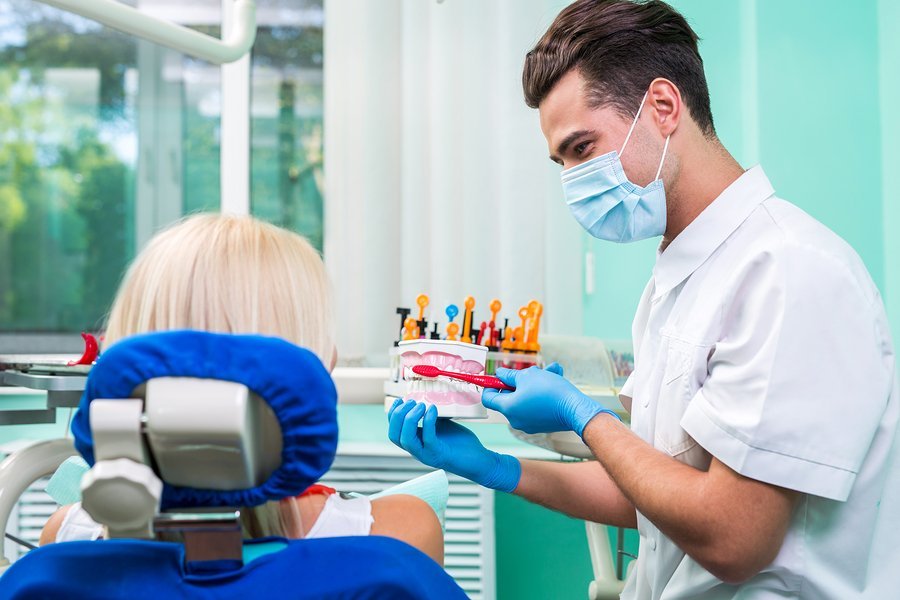While most of us give it little thought, the mouth is a complex structure with many features that work in seamless concert. The following guide on mouth anatomy will give you fascinating insight into how you are able to do so much with this versatile part of your body.
What Makes Up the Mouth?
Also called the buccal cavity or oral cavity, the mouth is the entrance to the body’s digestive tract. It opens on the outside at the lips and ends in the rear at the throat. Its boundaries are defined by the cheeks, lips, glottis and soft and hard palates.
The mouth is generally considered to be made up of two sections: the oral cavity proper and the vestibule, which makes up the space between the teeth and cheeks. The former section is filled by the tongue, a muscle anchored to the base of the mouth by the frenulum linguae. In addition to serving as an essential passageway for consumption of food, the mouth is also important for respiration and is critical for speech formation in humans.
Covered with mucous membranes, the roof of the mouth consists of a bony portion called the hard palate and a fleshy rear portion called the soft palate. While the hard palate separates the nasal and mouth passages; the soft palate creates a curtain between the throat and mouth to the rear. The soft palate also contains the uvula, a dangling piece of fleshy tissue at the rear of the mouth. The tonsils are positioned on both sides of the uvula and appear like pillars holding up the opening to the pharynx.
The upper surface of the tongue is covered with numerous papillae, tiny bumps that contain small pores which act as taste buds. There are four main types of taste buds on the tongue: those that sense sour, salty, sweet and bitter tastes. Beneath the tongue are three pairs of salivary glands that secrete saliva, which contains amylase, a digestive enzyme that begins to break down carbohydrates before food reaches the stomach.
At the front of the mouth, the lips are covered with skin and slick mucous membranes. The primary lip muscle, the orbicularis oris, is responsible for lip movements. The pink or reddish color of lips is due to underlying blood vessels. Behind the lips, we have upper and lower teeth lining the gums, which allow us to chew foods into smaller more digestible particles.
What Are Teeth Made of?
Human teeth are comprised of four different types of material: dentin, pulp, cementum and enamel. The innermost portion of teeth – pulp, consists of nerves, tissues and blood vessels. The pulp is made up of two parts: the root canal, which sits at the root of the tooth and the pulp chamber, which sits in the crown. Nerves and blood vessels enter the root via a tiny hole in its tip and make their way through the canal into the pulp chamber.
The pulp is surrounded by dentin, a hard, bone-like substance that makes up most of the actual tooth. Dentin is covered by teeth enamel, the hardest tissue in the entire body. This enables teeth to withstand the considerable pressure that comes from chewing, while also protecting against acids, bacteria and changes in temperature from cold and hot foods.
A layer of cementum also covers the exterior of the root beneath the gum line, holding the tooth in place within the jawbone.
How Many Baby Teeth Do You Lose?
At birth, a child will have 20 baby teeth that usually start to erupt around the time he or she reaches six months and are typically (but not always) fully developed before the age of three. Normally, a child will have ten teeth on the bottom and ten teeth on top; however, in some instances, genetic traits can affect how many baby teeth a child has, resulting in more or less. As adult teeth develop, baby teeth begin to fall out. In most cases, the last baby tooth will usually fall out by age 12.
How Many Teeth Do Humans Have?
Most adult humans have 32 teeth (16 on top and 16 on bottom). There are various types of teeth including 4 canines, 8 incisors, 8 premolars and 12 molars (4 of which are often called “wisdom teeth”). In some instances, people will develop extra wisdom teeth; although this isn’t particularly common.
The vast majority of people develop all of their adult teeth by the time they are teenagers. It’s common for adults to have their wisdom teeth extracted by a dentist to prevent crowding and misalignment of other teeth, due to limited space.
Can Humans Grow More Teeth?
While some animals are able to grow additional adult teeth; humans only get one set of adult teeth. There has been some promising research that suggests we may one day be able to regrow lost teeth. Until that day, however, it’s important to protect the teeth you have. This means maintaining a consistent brushing and flossing regimen, while scheduling regular dental appointments to catch potential problems in their infancies.



 Previous Article
Previous Article